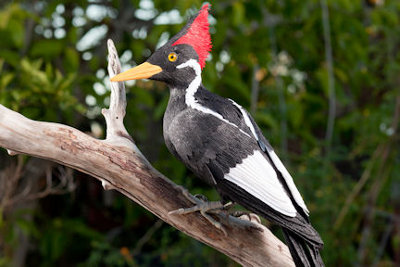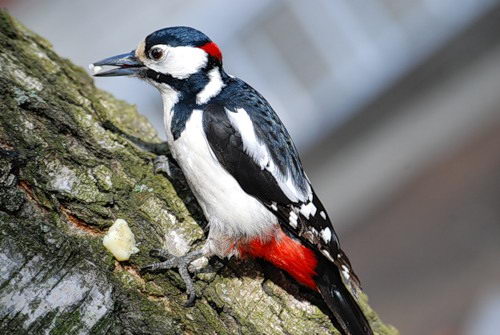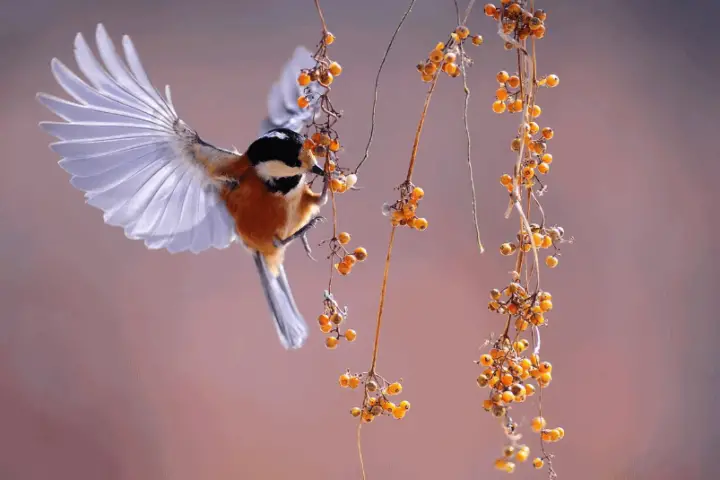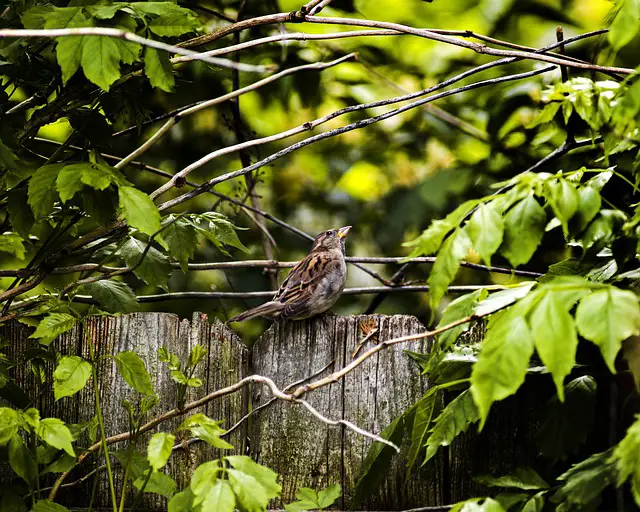The pileated woodpecker (Dryocopus pileatus) is the largest woodpecker species in the United States. The bird is almost the size of a crow and is often found in the boreal forests of Canada or in the deciduous forests in eastern North America. The physical appearance and the vocalizations are quite unique to this bird. This indeed helps the biologists the track its breeding territories.
Pileated Woodpecker Facts
Anatomy
- The pileated woodpecker is Iowa’s largest woodpecker with the length reaching around 40 to 49 cm (16 to 19 in) and weighs up to 250 to 400 g (8.8 to 14.1 oz) but the weight averages 300 g (11 oz).
- The wingspan measures around 66 to 75 cm (26 to 30 in). The length of each wing is 21.4 to 25.3 cm (8.4 to 10.0 in) while the tail is 14 to 17.4 cm (5.5 to 6.9 in) long.
- The woodpecker’s bill is 4.1–6 cm (1.6–2.4 in) long.
- They are recognized by their prominent red crest with the black color dominating the rest of the body. During flight the undersides of the wing displays white color.
- Pileated woodpeckers are known for their loud cry or laugh. This is why they are called ‘jungle bird’. Drumming is loud and it seems like someone is hammering a tree.
Distribution
Pileated woodpeckers are most likely to breed in the forested areas of Canada, eastern United States and some parts of the Pacific coast. The bird also breeds in the British Columbia east to the Atlantic, central Iowa, eastern Great Plains, western Minnesota.

Habitat
The bird prefers heavy wooded parks, mature hardwood trees, mature forests, and large tracts of forest.
Feeding Ecology and Diet
- Pileated woodpeckers are primarily insectivores. They seem to rely on carpenter ants and wood-boring beetle larvae. However, they also supplement their diet with some nuts, fruits, berries, including poison ivy berries.
- They are often found chipping out large holes in trees to look for ants’ galleries. The bird will also throw its tongue into crevices to reach out the insects which are otherwise impossible to lap up.
- Pileated woodpeckers can feed on small vines or branches. They are observed feeding on insects in dead trees.
Behavior
- The pileated woodpecker is likely to dig large nests in dead-tree cavity. These cavities can sometimes cause the fallen tree to break in half. There are multiple entrances to the woodpecker’s nest. In here the mother will raise her chicks each year.
- The male woodpecker builds a nest and attracts a female to mate and raise her young.
- After using the hole in which the brood is raised, the same couple will go after another hole next year—abandoning the previous one. The woodpecker’s hole is often used by many other bird species.
- The nests are 15 to 80 feet above the ground.
- A pileated woodpecker is non-migratory species as it stays within its territory all year round. As such the bird will defend its territory against an intruder.
- The woodpecker will strike its bill against a hollow tree to make the largest sound and to claim a territory.
Reproductive Biology
- Unique among the woodpecker’s habits is that they abandon their sites if any eggs fall out of the nest.
- Both parents contribute towards incubating eggs for 12 – 16 days. There are 3 – 5 eggs in a clutch but the size averages 4.
- The young bird will take 26 – 28 days to fledge.
- The maximum lifespan of pileated woodpeckers is 10 – 12 years.
- American martens, weasels, squirrels, rat snakes and gray foxes are the most common predators of pileated woodpeckers.
Conservation Status
Least Concern








I have a pair of Pileated Woodpeckers, that visit at least two times a day. They seem to like my wifes home made suet, over that bought in the stores. They are very pretty, but don’t seem to get trusting very easily. I have gotten several really nice photos of the two who visit our feeder. If you would like a copy, let me know, and I will try to send them. My computer skills aren’t as good as they should be.
Larry Medsker
8822 N. Helena
Pentwater, MI 49449
(918) 766-1130